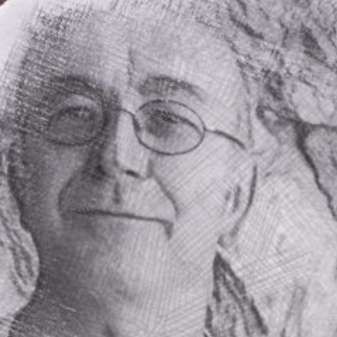This creative SCO programme offered two works in either half, performed in reverse chronological order. Virtuoso violinist Alexander Janiczek directed the first of each pair, beginning with Schubert’s 1817 Overture in D major “In the Italian Style”, D.590. Conrad Wilson, whose supplied fine programme notes for the entire concert, described the work as Schubert’s response to a “Rossini frenzy that swept Vienna in 1816”. Taking this as a test case, the Italianising of Teutonic works seems to amount to a lightening of touch. However, this didn’t rule out the severe drama of an explosive diminished chord early in the piece, which made several nearby audience members jump. The performance was elegant and rousing by turns with lovely flute and oboe contributions from Alison Mitchell and Robin Williams respectively.
The opening of the second half could not have been more contrasting – Beethoven’s 1825 Grosse Fugue for strings, Op. 133. Prompting bewilderment and abuse in its day, the piece was eventually replaced as the finale to Beethoven’s String Quartet in B flat, Op. 130, and then published as a standalone work. With the obvious exception of numbers, the single biggest difference, to my ears, between quartet and string orchestra versions is the thunderous contribution of double basses, here supplied by Nikita Naumov and Adrian Bornet. It was fascinating to see the communicative effect of the body language of string players, especially in the severe, dotted passages early in the work which contrasted completely with the serenity of the following passage. Also interesting was noting that Janiczek, who had on occasion paused from playing to direct woodwind in the Schubert, felt able here to rely solely on bow-related signalling for the string players. This was a thrilling rendition of a work which Stravinsky claimed will “be contemporary forever”. 188 years after its composition, there seems little danger of it sounding dated.
The remainder of the evening’s musical direction came from Polish pianist Piotr Anderszewski, who directed two Mozart concertos from the piano. Seeing two such performances in the same evening caused me to wonder what percentage of direction takes place during rehearsal, where decisions are agreed, as opposed to during the performance. A grand piano must obscure the sight-line of some orchestra members; the first violins were positioned behind the soloist. This is not to denigrate the performances, which were outstanding – and there were many standing in the balcony for this sell-out event. I simply wonder if an orchestra of this calibre requires direction in tutti passages of steady tempo.
Although both concertos were written in Mozart’s hyper-productive year of 1786, they are very different in character. The opening of no. 23 in A (K488) is bright and sunny, while that of no. 25 in C (K503) is more boisterously imposing, due, in part, to the inclusion of trumpets and drums. The Sicilienne-style Adagio of K488 is quietly wistful in mood, while that of K503 feels, to me, more searching, and contains some arpeggio passages whose harmony put me in mind of Chopin. These moments, which featuring very tender entanglement with woodwind, were exquisitely put across, particularly the lovely bassoon playing of Peter Whelan, who had already enjoyed a cheerful tandem ride with the piano in the finale of K488.
Being reminded of similarities between themes can be as distracting as it is amusing in a live concert. Already reminded of the Dashing White Sergeant in the finale of K488, I was put in mind of Claude Joseph Rouget de Lisle’s La Marseillaise during the opening Allegro maestoso of K503. As this postdates Mozart’s concerto by six years, questions of influence may not be so outlandish.
Anderszewski’s playing was a delight. He seems comfortably to combine a somewhat introspective demeanour with the ability to communicate joy. The former trait I noted during moments of syncopation which Anderszewski really seemed to enjoy and to inhabit. This was particularly true in the closing Allegretto of K503. I sensed that both soloist and orchestra were enjoying the trompe-oreille of this Gavotte-style finale, where the third beat (of four) can, on occasion, be mistaken for beat one, requiring an internal skip on the part of the listener to correct the wrong-footing.
The response to these concerto performances was extremely warm, Anderszewski being called back three times in each half. The audience were rewarded with a beautifully lyrical account of the Sarabande from Bach’s French Suite no. 5 in G major, BWV 816. The combination of Bach’s writing and Anderszewski’s playing resulted in a sarabande which floated far from any notion of dance steps, and almost from gravity itself.


